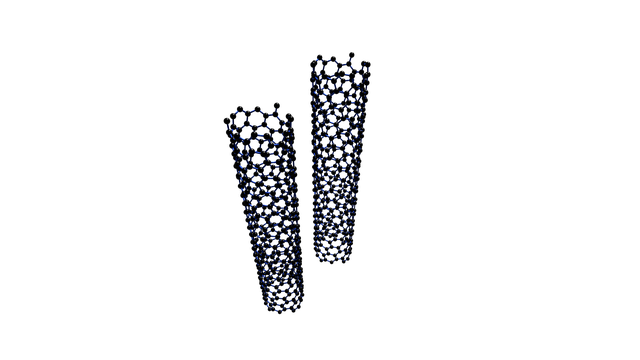While the recent announcement of the world’s largest hard drive (a 16 terabyte ‘plug and play’ that is only 3.5” big) has been astounding technology specialists everywhere, most remain unaware that carbon nanotube technology may be about to give hard drive storage limits an even bigger boost.
This is because ground-breaking work carried out by researchers from the Faculty of Science at Charles University in Prague together with colleagues from Japan, have found that nanoparticles of iron trapped inside carbon nanotubes have unexpected electromagnetic properties. Properties that could break through current data storage limits and create a new field of hard disk possibilities, just as current technology is reaching a limit.
“Over the years, increasing the areal data density on a hard drive has slowed from 40% per year to just 10-15%,” reports the Czech journal Scientific Mag. “The cause of this slowdown is fundamental physics. In order to upload more data to a certain area of the media, we need a smaller area per bit of information. However, it is not possible to use magnetic granules of an ever-smaller size and still be able to maintain a stable magnetic signal. The smallest possible size of a stable grain is called the ‘superparamagnetic limit’. And the problem is that hard disk manufacturers have reached this limit.”
This is where geophysicist Günther Kletetschka and his Czech-Japanese team have stepped in as one of the few research bodies examining the electromagnetic properties of carbon nanotubes.
As Dr Kleteteschka observes, “Carbon nanotube material has been manufactured by Japanese scientist Yoko Inoue for several years, but I and my team have looked at them in terms of electromagnetism.”

This analysis found that particles trapped inside carbon nanotubes oscillate at specific frequencies, and that by regulating those frequencies the team was able to increase the magnetic properties of the particles, potentially enabling greater data storage.
The research has now been published in the journal Nature, where the team outline their procedure and the technical aspects of their research. Stating that, “Multiwall carbon nanotubes (MWCNTs) fabricated by chemical vapor deposition contain magnetic nanoparticles. While increasing the frequency of an electromagnetic field (EMF) exposure (up to <10 kHz) on the MWCNTs resulted in a slightly induced magnetization decrease due to the skin effect of the conducting carbon, we discovered that higher frequencies (>10 kHz) contained an exponential magnetization increase. [Furthermore] We show that a puzzling magnetization increase with decreasing magnetic field amplitude (less than 0.5 A/m for 512 kHz) is due to matching the field amplitudes of the magnetic nanoparticles inside the nanotubes. This observation reveals the possibility of magnetic tunnelling in MWCNTs (a change of magnetic state of blocked magnetic moments).”
While the detail in the discovery is difficult for the man on the street to understand, the results are perfectly clear. As the Czech Daily, Hospodarske Noviny explains, “The newly discovered material shows that it is possible to overcome the current data limit by combining magnetic granules with carbon nanotubes. Prior to the discovery it was necessary to have magnetic granules large enough to maintain a stable magnetic signal. However, by combining carbon nanotubes with the granules it is possible to get below the smallest possible limit, giving an unprecedented magnetic recording density. The study has shifted hard disk technology in a completely new direction.”
"People want more and more information to be stored in an ever-smaller area,” observes Kletetschka. Maybe carbon nanotubes and Czech researchers have found a way to make this a reality.
Photo credit: Nature, Techradar, Nextbigfuture, & Gemmasponderings
